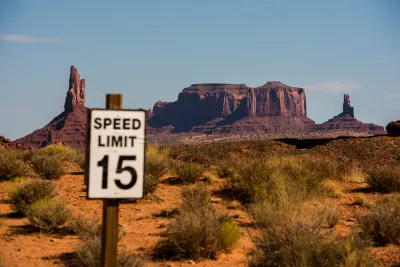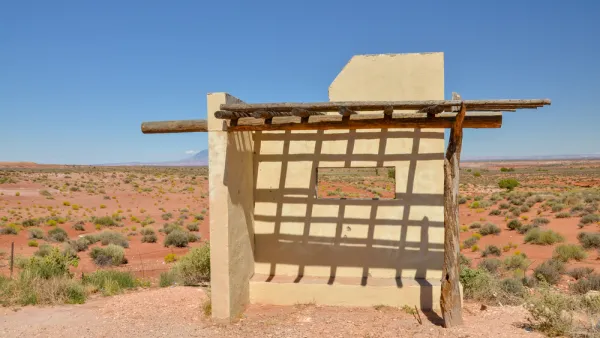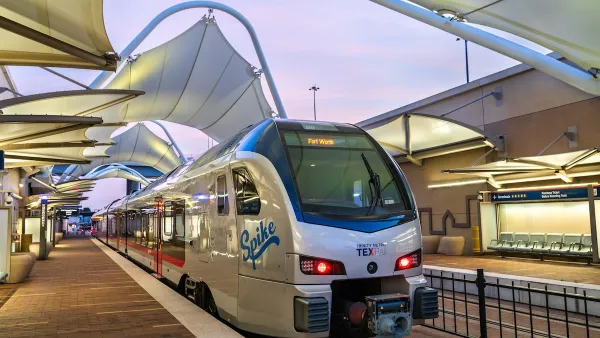Advocates for tribal communities argue that the bipartisan infrastructure bill does not direct enough money to tribal transportation needs, but USDOT and local leaders can ensure more equitable distribution of funds to projects on tribal lands.

A blog post from Tala Parker, a summer fellow at the Natural Resources Defense Council (NRDC), examines the funding available for tribal transportation projects in last year’s infrastructure law, the potential for improvements, and the shortfalls of the bill in addressing the high rates of traffic violence on tribal lands.
“While the overall budget doubled, funding for Tribal transportation only increased by about 50 percent (from $2.4 billion in the FAST Act to $3.8 billion in the infrastructure law).” Parker explains that this increase is clearly inequitable, in part because Native people die at disproportionately high rates on roadways, and because the funding is not even proportionate to the Native population.
It is still possible to close the gap between the infrastructure law’s inadequate Tribal funding allocation and an equitable spending strategy, if the federal government and states succeed in allocating an additional $9-10 billion to address needs identified by Indigenous communities.
Parker outlines the oversight and long-term capacity building necessary to successfully implement this approach. Because the federal government did not direct enough funds to tribal roads and transportation in the bill, Parker writes, it’s up to state governments, tribal leaders, and the Department of Transportation to ensure an equitable distribution of resources that will improve safety and transportation options in tribal communities.
FULL STORY: Infrastructure law short on tribal transportation spending

National Parks Layoffs Will Cause Communities to Lose Billions
Thousands of essential park workers were laid off this week, just before the busy spring break season.

Retro-silient?: America’s First “Eco-burb,” The Woodlands Turns 50
A master-planned community north of Houston offers lessons on green infrastructure and resilient design, but falls short of its founder’s lofty affordability and walkability goals.

Delivering for America Plan Will Downgrade Mail Service in at Least 49.5 Percent of Zip Codes
Republican and Democrat lawmakers criticize the plan for its disproportionate negative impact on rural communities.

Test News Post 1
This is a summary

Test News Headline 46
Test for the image on the front page.

Balancing Bombs and Butterflies: How the National Guard Protects a Rare Species
The National Guard at Fort Indiantown Gap uses GIS technology and land management strategies to balance military training with conservation efforts, ensuring the survival of the rare eastern regal fritillary butterfly.
Urban Design for Planners 1: Software Tools
This six-course series explores essential urban design concepts using open source software and equips planners with the tools they need to participate fully in the urban design process.
Planning for Universal Design
Learn the tools for implementing Universal Design in planning regulations.
EMC Planning Group, Inc.
Planetizen
Planetizen
Mpact (formerly Rail~Volution)
Great Falls Development Authority, Inc.
HUDs Office of Policy Development and Research
NYU Wagner Graduate School of Public Service





























